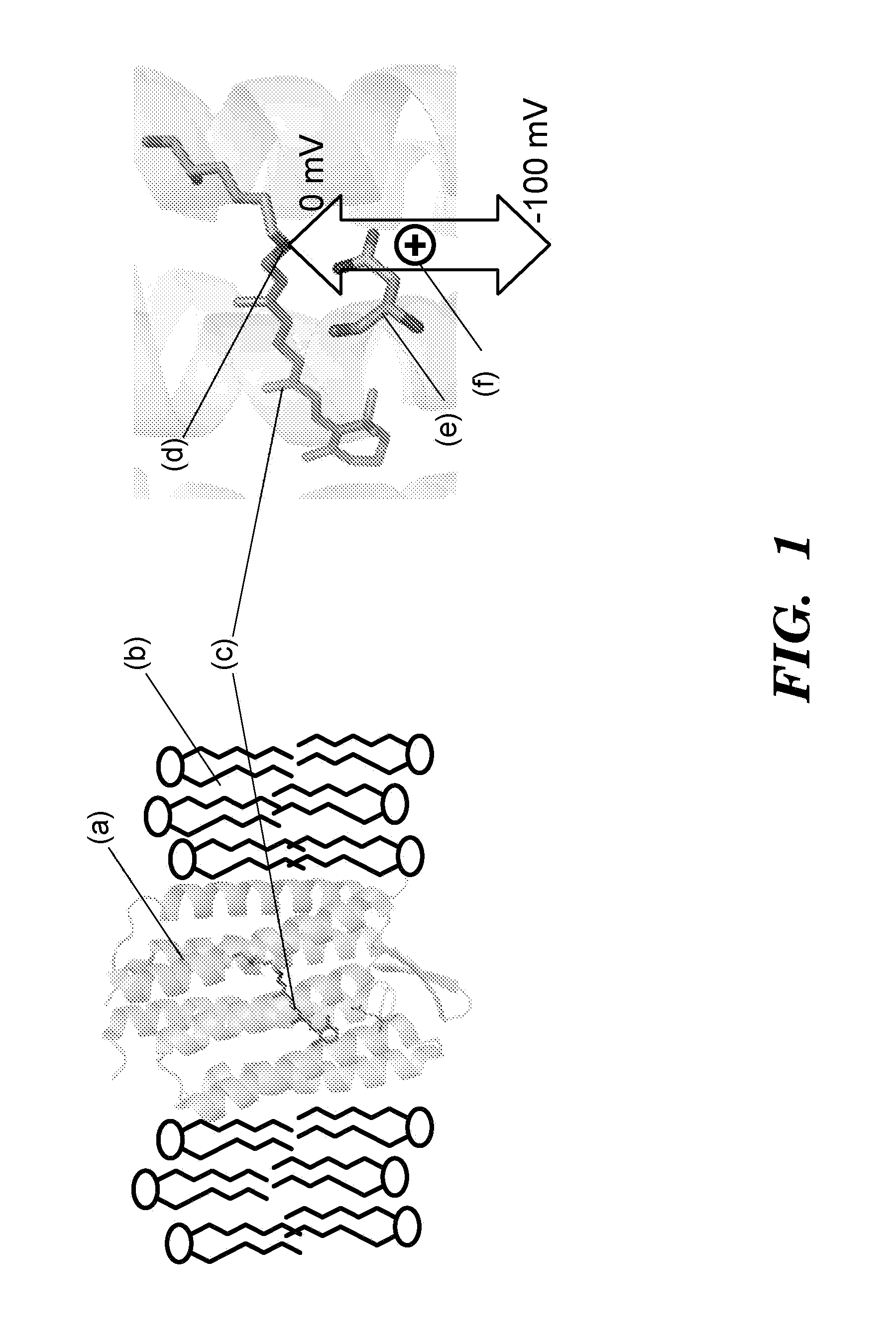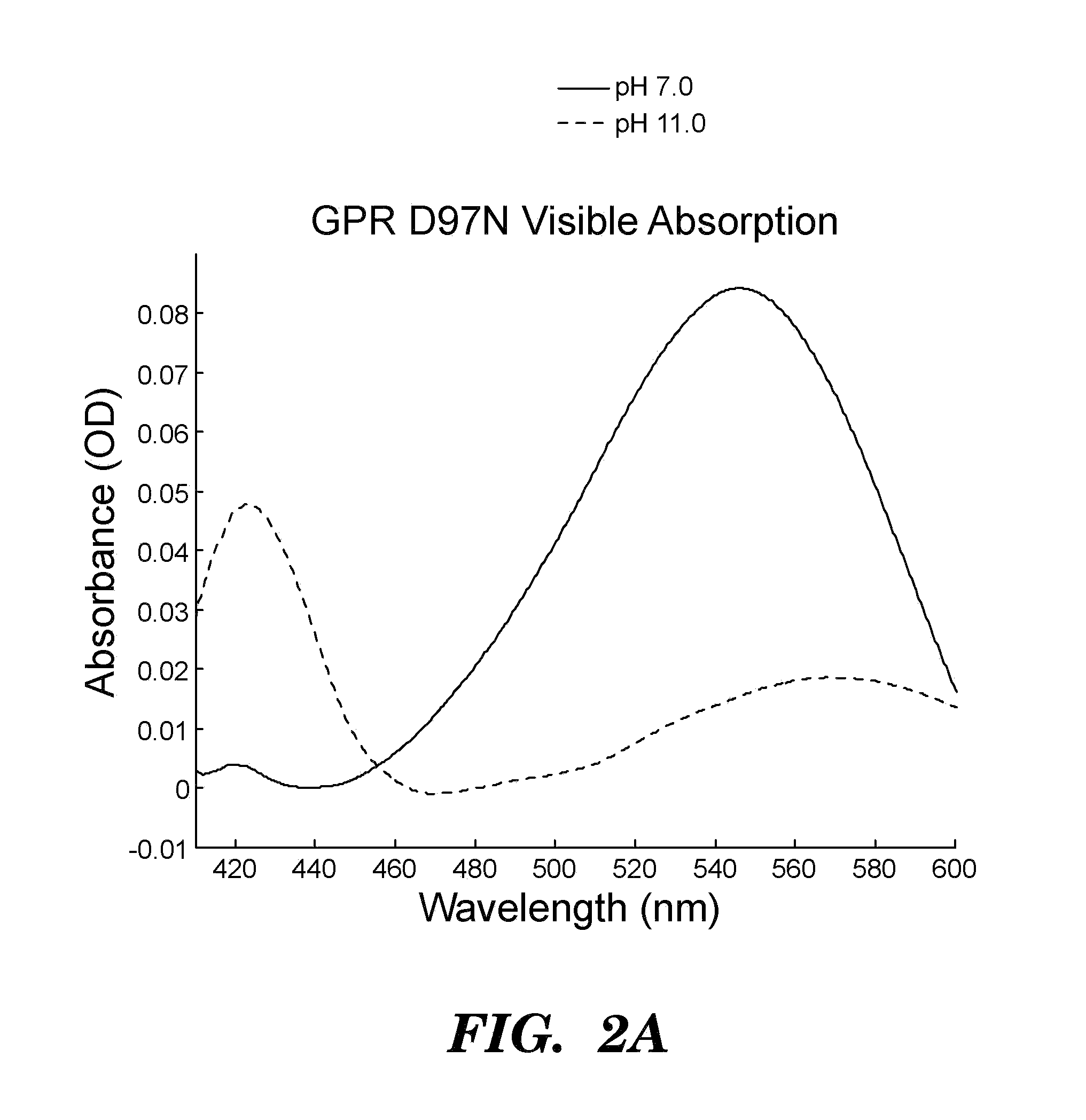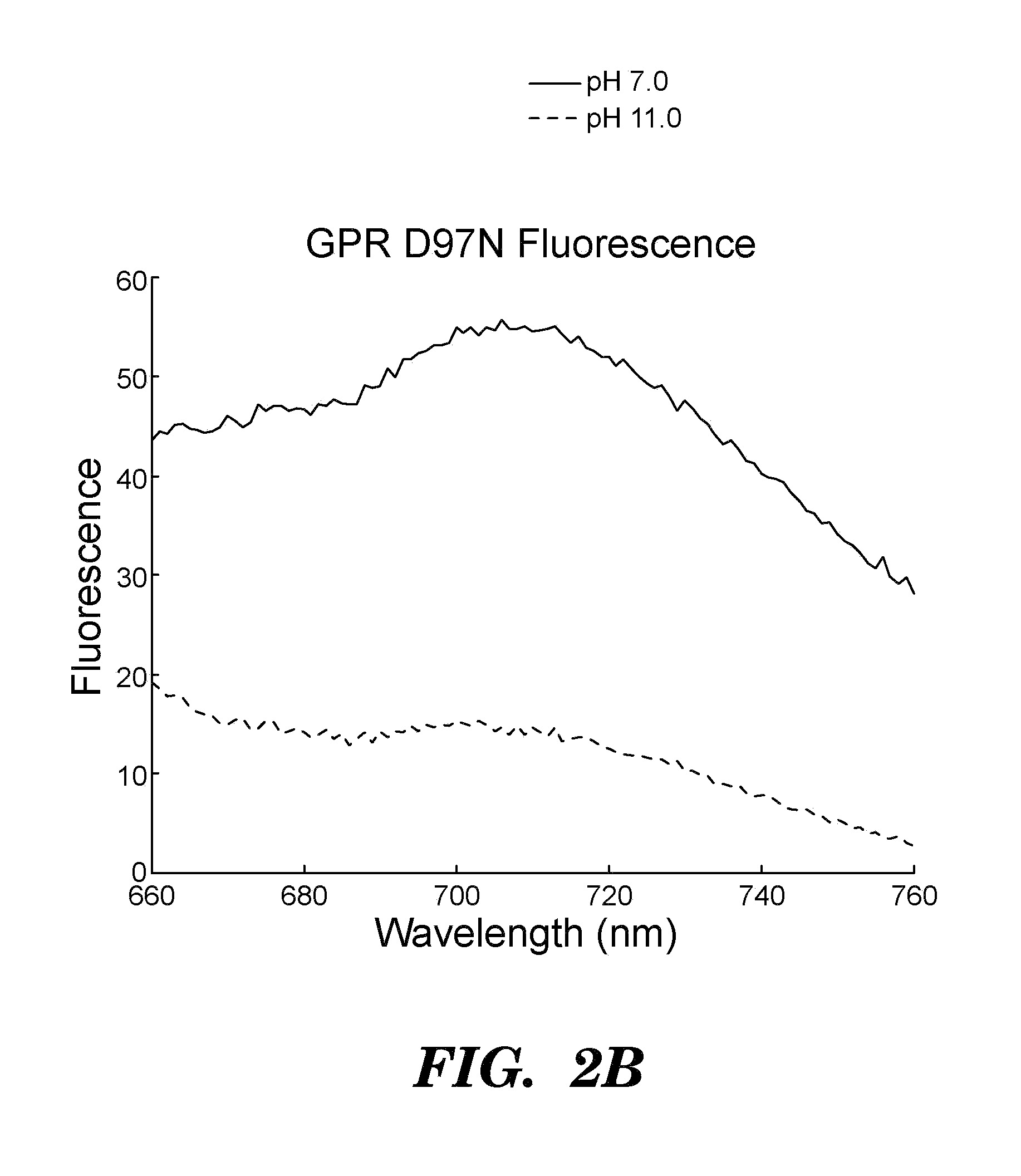Optogenetic probes for measuring membrane potential
a technology of optogenetic probes and membrane potentials, applied in the field of optogenetic probes for measuring membrane potentials, can solve the problems of slow electrophysiological experiment setup, inability to access deep buried tissues, and difficult to measure membrane potentials, so as to reduce the ion pumping activity of such proteins and reduce the ion pumping activity
- Summary
- Abstract
- Description
- Claims
- Application Information
AI Technical Summary
Benefits of technology
Problems solved by technology
Method used
Image
Examples
example 1
Proteorhodopsin as a Fluorescent Sensor of Protons
[0510]Proteorhodopsins are a large family of photoactive transmembrane proteins recently discovered in marine bacteria. Green-absorbing proteorhodopsin (GPR) is a light-driven proton pump that converts solar energy into a proton-motive force used by its host to power cellular machinery. The directional motion of a proton through GPR is accompanied by a series of dramatic color shifts in the protein. The approach of the study was to determine whether GPR could be run backward: could a transmembrane potential drive a proton through the protein and thereby alter its color? Described herein is a protein-based colorimetric indicator of membrane potential using such an approach.
[0511]A covalently bound retinylidene is the visible chromophore of GPR. A Schiff base (SB) links the retinal to the ε-amino group of lysine 231. Early in the wild-type photocycle, a proton leaves the SB, causing a shift in the peak absorption from λmax=535 nm to λm...
example 2
Arch 3 can be Run Backward and Thereby Provide a Voltage Sensor
[0531]Archaerhodopsin 3 (Arch 3) from Halorubrum sodomense is a light-driven outward proton pump, capturing solar energy for its host (Ihara, K. et al. Evolution of the archaeal rhodopsins: evolution rate changes by gene duplication and functional differentiation. J. Mol. Biol. 285, 163-174 (1999)). Recently Arch 3 was expressed in mammalian neurons, wherein it enabled optical silencing of neural activity, and was shown to be minimally perturbative to endogenous function in the dark (Chow, B. Y. et al. High-performance genetically targetable optical neural silencing by light-driven proton pumps. Nature 463, 98-102 (2010)). We have now demonstrated that Arch 3 can be run backward: that a membrane potential can alter the optical properties of the protein, and thereby provide a voltage sensor that function through a mechanism similar to PROPS.
[0532]At neutral pH Arch 3 was pink, but at high pH the protein turned yellow (FIG...
PUM
| Property | Measurement | Unit |
|---|---|---|
| wavelength | aaaaa | aaaaa |
| wavelength | aaaaa | aaaaa |
| pH | aaaaa | aaaaa |
Abstract
Description
Claims
Application Information
 Login to View More
Login to View More - R&D
- Intellectual Property
- Life Sciences
- Materials
- Tech Scout
- Unparalleled Data Quality
- Higher Quality Content
- 60% Fewer Hallucinations
Browse by: Latest US Patents, China's latest patents, Technical Efficacy Thesaurus, Application Domain, Technology Topic, Popular Technical Reports.
© 2025 PatSnap. All rights reserved.Legal|Privacy policy|Modern Slavery Act Transparency Statement|Sitemap|About US| Contact US: help@patsnap.com



